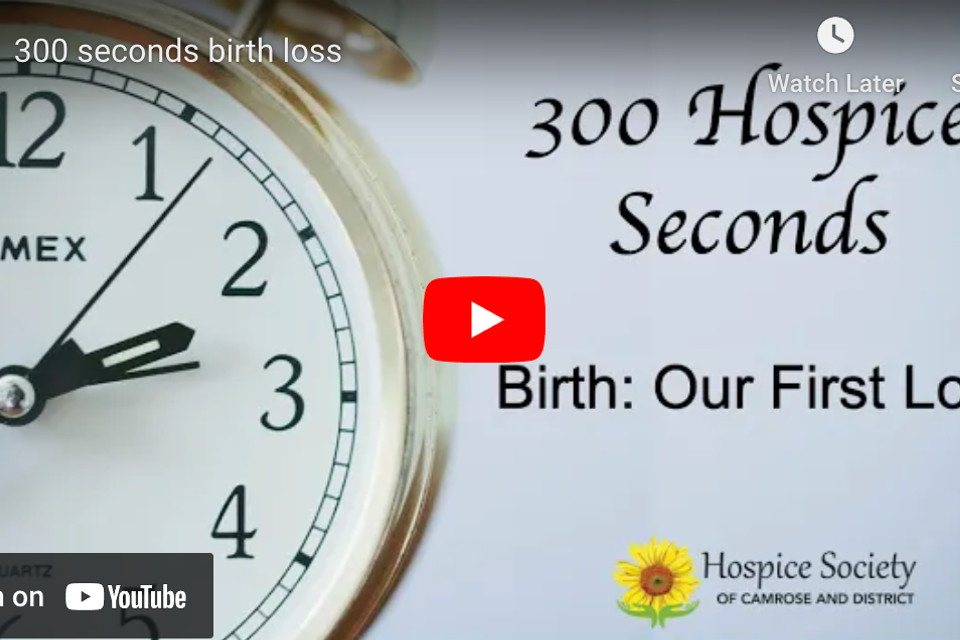
Hospice care is a centuries old practice that is becoming integrated into our modern health care system. Hospice recognizes that, in addition to the best medical attention, optimal care includes emotional, social and spiritual needs as well.
As more members of our aging society face the dying process, we hope hospice care will become an integral part of the support that is offered (Excerpt is from “History of Palliative Care” – Victoria Hospice) Modern hospices or programs of care for the dying began in Britain. The most famous is St. Christopher’s Hospice in London, begun by Dame Cicely Saunders in 1967. (Pictured at right.)
Hundreds of years ago, during the Crusades of the Middle Ages, we know that hospices were often found in monasteries, established not only for the sick and dying, but also for the hungry wayfarer, the woman in labour, the needy poor, the orphan, and the leper. The goal was hospitality in its true sense: protection, refreshment, and fellowship rather than the demand for a cure.
In the 17th century, a young French priest, St. Vincent de Paul, founded the Sisters of Charity in Paris and opened several houses to care for orphans, the poor, the sick and the dying. In 1900, five of the Irish Sisters of Charity founded St. Joseph’s Convent in the East End of London and started visiting the sick in their homes. In 1902, they opened St. Joseph’s Hospice with 30 beds for the dying poor.
The first hospice programs in Canada opened in 1975 at St. Boniface Hospital in Winnipeg and in Montreal at the Royal Victoria Hospital under Dr. Balfour Mount.
In Montreal, Dr. Mount coined the term “palliative care” (soins palliatif in French) rather than the word “hospice” which, from the early history of Lower Canada, was commonly considered a place of last resort for the poor and derelict. The word “palliative” comes from the Latin word meaning “to cover or cloak”. This unique Canadian use of the term “palliative care” caught on quickly and, in Canada, is used more frequently than “hospice”. An alternative word “home” (maison in French) is also used in Quebec.
The Palliative Care Foundation of Canada was formed in the early 1980s, later replaced by the Canadian Hospice Palliative Care Association.
The oldest freestanding hospice house in Alberta is Agape Hospice in Calgary, founded in 1992. Since then, hospice houses in Alberta have been established in Edmonton, Red Deer, Okotoks, Olds and Stettler.
As more members of our aging society face the dying process, we hope hospice care will become an integral part of the support that is offered (Excerpt is from “History of Palliative Care” – Victoria Hospice) Modern hospices or programs of care for the dying began in Britain. The most famous is St. Christopher’s Hospice in London, begun by Dame Cicely Saunders in 1967. (Pictured at right.)
Hundreds of years ago, during the Crusades of the Middle Ages, we know that hospices were often found in monasteries, established not only for the sick and dying, but also for the hungry wayfarer, the woman in labour, the needy poor, the orphan, and the leper. The goal was hospitality in its true sense: protection, refreshment, and fellowship rather than the demand for a cure.
In the 17th century, a young French priest, St. Vincent de Paul, founded the Sisters of Charity in Paris and opened several houses to care for orphans, the poor, the sick and the dying. In 1900, five of the Irish Sisters of Charity founded St. Joseph’s Convent in the East End of London and started visiting the sick in their homes. In 1902, they opened St. Joseph’s Hospice with 30 beds for the dying poor.
The first hospice programs in Canada opened in 1975 at St. Boniface Hospital in Winnipeg and in Montreal at the Royal Victoria Hospital under Dr. Balfour Mount.
In Montreal, Dr. Mount coined the term “palliative care” (soins palliatif in French) rather than the word “hospice” which, from the early history of Lower Canada, was commonly considered a place of last resort for the poor and derelict. The word “palliative” comes from the Latin word meaning “to cover or cloak”. This unique Canadian use of the term “palliative care” caught on quickly and, in Canada, is used more frequently than “hospice”. An alternative word “home” (maison in French) is also used in Quebec.
The Palliative Care Foundation of Canada was formed in the early 1980s, later replaced by the Canadian Hospice Palliative Care Association.
The oldest freestanding hospice house in Alberta is Agape Hospice in Calgary, founded in 1992. Since then, hospice houses in Alberta have been established in Edmonton, Red Deer, Okotoks, Olds and Stettler.













